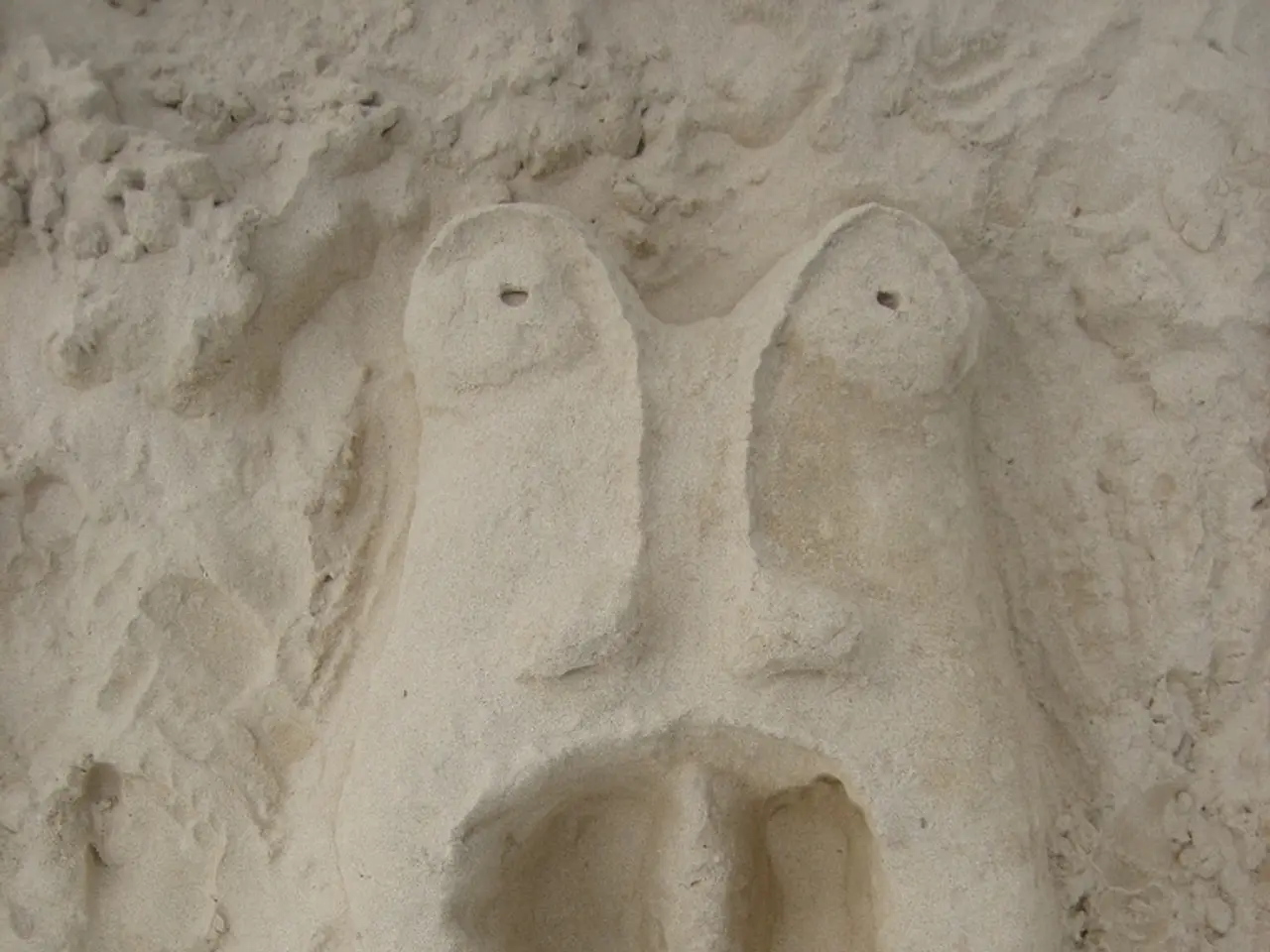Epic Sand Sculpting Surface Modeled After Mythical Figures Laborious Tasks
In the realm of creative and educational projects, a self-tracing sand table has emerged as an intriguing and captivating invention. This article provides an in-depth look at a sand table project, developed by students Aidan, Jorge, and Henry as part of their ECE4760 class at Cornell University.
The sand table, designed on a polar coordinate system, offers a unique blend of mechanical engineering and electronics, autonomously creating patterns in the sand for as long as power is applied. The build is based on a pair of NEMA17 stepper motors, commanded by TMC2209 drivers, and another stepper motor that pans a magnet back and forth along the length of the table.
A Raspberry Pi Pico serves as the brain of the operation, controlling the entire sand-drawing table. The sand pit on top of the table is made with a laser-cut wooden ring affixed to a thick base plate. One stepper motor rotates an arm under the table, while another is used to drag a magnet beneath the sand, creating intricate patterns.
The trio offers detailed explanations of the hardware and software decisions made for the sand-drawing table, making this article a valuable resource for those interested in building a sand table. For those looking for a good starting point, constructing a sand table similar to Aidan, Jorge, and Henry's project is recommended.
While this project serves as a prime example, there are other sand table projects that creatively use motors and control systems to manipulate sand or magnetic elements to create patterns. For instance, the Printerforge project utilises an ESP32 controller combined with small 28BYJ-48 stepper motors arranged in a CoreXY layout. This setup moves a small magnet to drag a ball bearing through the sand and produce intricate patterns, controlled by G-code generated with the Sandify tool.
Other sand tables focus on educational or sensory engagement with modular or Montessori-style designs, while kinetic sand tables designed for sensory play and artistic expression, such as DIY projects highlighted on platforms like TikTok, cater to children. Meanwhile, commercial or artistic kinetic sandscape tables, like the 3D deep sea moving sand art, offer visually relaxing sand movement within enclosed art forms, serving as desktop decorative pieces rather than fully programmable sand tables.
Whether you're interested in artistic pattern generation or educational engagement, these sand table projects share the use of mechanical systems and electronics to autonomously create patterns in sand, a hallmark of this niche. If you want details on a particular style or complexity level in these sand table projects, more focused examples can be provided. This article aims to inspire and guide those with a passion for DIY projects, offering a comprehensive guide for building a sand table that is both informative and engaging.
This sand table project, built with a Raspberry Pi Pico as the brain, showcases a blend of mechanical engineering and electronics, using NEMA17 stepper motors and TMC2209 drivers. On the other hand, the Printerforge project utilizes an ESP32 controller and 28BYJ-48 stepper motors, demonstrating the versatility of technology in sand table designs.






